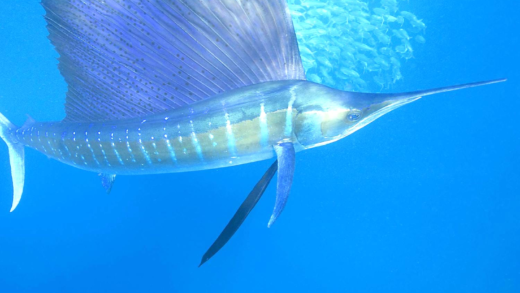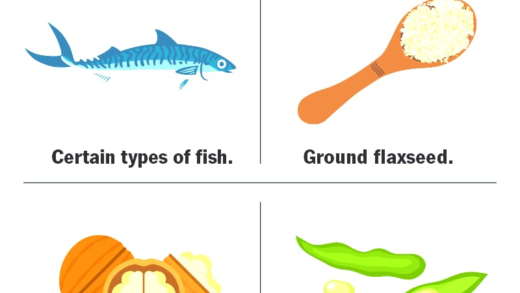Yellow sac spiders are small arachnids that may bite humans in self-defense, causing mild symptoms like redness and swelling. Their bites are typically not dangerous, but monitoring for severe reactions is essential. First aid includes cleaning the bite and applying a cold compress. The lifecycle of yellow sac spiders includes egg, juvenile, and adult stages, with females laying protective silk sacs for their eggs.
What is a Yellow Sac Spider?
The yellow sac spider is a small, agile arachnid known for its distinctive yellow or pale body. Typically, these spiders measure about 5 to 10 mm in length. Their legs are long and slender, making them appear quite nimble. Yellow sac spiders belong to the family Clubionidae and are often confused with other common spiders due to their size and color.
One of the main features of yellow sac spiders is their ability to adapt to various environments. They possess a unique behavior of creating silk sacs where they hide during the day. These sacs are not traditional webs; instead, they serve as a protective retreat.
Where Can You Find Yellow Sac Spiders?
Yellow sac spiders are commonly found in a variety of habitats. They thrive in gardens, grasslands, and even inside homes. Their preference for warm climates means they are often spotted in sunny locations, especially during the spring and summer months. In urban areas, they can be found in corners of rooms, under furniture, and in crevices.
These spiders prefer to inhabit areas with ample vegetation, as it provides both cover and hunting grounds. They can also be found in leaf litter or under rocks, where they can easily ambush unsuspecting prey. Their adaptability allows them to live in both rural and urban settings.
Why Don’t Yellow Sac Spiders Build Webs?
Unlike many other spider species, yellow sac spiders do not construct webs for trapping prey. Instead, they rely on their speed and agility to catch food. This unique hunting method involves stalking and ambushing their prey, which mainly consists of small insects.
When hunting, yellow sac spiders exhibit a behavior known as “sit-and-wait” predation. They often remain still, blending into their surroundings, and then quickly pounce on insects that come too close. This strategy proves effective, as they can catch prey much larger than themselves.
In summary, their lack of web-building is compensated by their effective hunting techniques, making yellow sac spiders fascinating creatures in the arachnid world.
How Do Yellow Sac Spiders Catch Their Prey?
The yellow sac spider employs unique hunting techniques that set it apart from many other arachnids. These spiders are agile and swift, relying on their speed rather than webs to capture prey. Their primary method involves a combination of ambush and active hunting.
Here’s how they do it:
- Sit-and-Wait Technique: Yellow sac spiders often remain motionless in their environment, camouflaged against the foliage. This allows them to blend in and wait for unsuspecting insects to wander too close.
- Quick Pounce: When the opportunity arises, they can spring into action, using their speed to catch prey. They’re known to take on insects that are larger than themselves, showcasing impressive predatory skills.
- Use of Silk: Although they do not create traditional webs, yellow sac spiders use silk for various purposes. They may spin silk threads to help stabilize themselves during a jump or to create a protective retreat.
Overall, their unique hunting strategy is effective and allows them to thrive in various environments, making them fascinating creatures in the world of spiders.
What Makes Yellow Sac Spiders Different from Other Spiders?
Yellow sac spiders stand out due to several unique characteristics that differentiate them from other spider species. Understanding these differences can help in proper identification and appreciation of their role in the ecosystem.
Key differences include:
- Non-Web Builders: Unlike many spiders that rely on intricate webs to catch prey, yellow sac spiders are active hunters. This approach allows them to adapt to various environments where webs may not be practical.
- Coloration and Size: Their distinctive yellow or pale color, along with their small size (5 to 10 mm), makes them easily recognizable. This coloration can vary, but it typically helps them blend into their surroundings.
- Behavioral Traits: They exhibit a unique behavior of creating silk sacs for shelter rather than traditional webs. This adaptability allows them to hide during the day and ambush prey effectively at night.
These characteristics not only make yellow sac spiders unique but also highlight their evolutionary adaptations that contribute to their survival.
How to Identify a Yellow Sac Spider?
Identifying a yellow sac spider can be straightforward if you know what to look for. Their distinct features can help you recognize them in both natural and urban environments.
Here are the key identification points:
- Color: As the name suggests, yellow sac spiders are typically yellow or pale in color, which can help them blend into their environment.
- Body Shape: They have a small, rounded body with long, slender legs. Their body length usually ranges between 5 and 10 mm.
- Eye Arrangement: Yellow sac spiders possess eight eyes arranged in two rows of four. This unique eye configuration can help in their identification.
- Silk Sac: Look for small silk sacs in vegetation or corners of rooms; these serve as their daytime hiding spots.
By keeping an eye out for these features, you can confidently identify yellow sac spiders and understand their fascinating role in the ecosystem.
Why Do Yellow Sac Spiders Bite Humans?
The yellow sac spider bites humans primarily in self-defense. When they feel threatened or cornered, they may resort to biting as a means of protection. These spiders are not aggressive and typically do not seek out humans to bite. Most bites occur when a person inadvertently disturbs a spider’s hiding place, such as when reaching into a garden or moving furniture. Understanding their behavior can help mitigate the risk of bites.
Factors that may lead to yellow sac spider bites include:
- Proximity: Being too close to their hiding spots can provoke a bite.
- Handling: Attempting to catch or handle them can trigger defensive actions.
- Nighttime Activity: Since they are nocturnal, unintentional contact during the night increases bite risks.
It’s essential to respect these creatures and avoid unnecessary interactions to minimize the likelihood of bites.
Are Yellow Sac Spider Bites Dangerous?
Yellow sac spider bites can cause discomfort but are generally not considered dangerous. Symptoms often resemble those of other spider bites, including redness, swelling, and mild pain at the bite site. In some cases, individuals may experience more severe reactions, such as nausea or fever, especially if they are allergic to spider venom.
It’s important to note that while yellow sac spiders are not venomous enough to be life-threatening, their bites can lead to secondary infections if not treated properly. Common symptoms of a bite include:
- Pain: A sharp pain may occur immediately after the bite.
- Redness and Swelling: The area around the bite can become inflamed.
- Itching: Some people may experience itching in the affected area.
If you notice any unusual symptoms or if the bite site worsens, it’s advisable to seek medical attention.
What Should You Do If You Get Bitten by a Yellow Sac Spider?
If bitten by a yellow sac spider, the first step is to remain calm. Most bites can be treated at home, but knowing what to do can help alleviate symptoms and prevent complications. Here’s what to do:
- Clean the Bite Area: Wash the bite site with soap and water to prevent infection.
- Apply a Cold Compress: This can help reduce swelling and numb the pain.
- Take Pain Relievers: Over-the-counter medications like ibuprofen or acetaminophen can alleviate discomfort.
- Monitor for Symptoms: Keep an eye on the bite for any signs of infection or severe reaction.
- Seek Medical Help: If symptoms worsen or you have an allergic reaction, such as difficulty breathing or swelling beyond the bite area, seek immediate medical attention.
Being informed about how to respond to spider bites can ensure your safety and health.
What is the Lifecycle of a Yellow Sac Spider?
The lifecycle of a yellow sac spider consists of several stages, including egg, juvenile, and adult phases. Understanding their lifecycle can provide insights into their behavior and habitat preferences. Here’s a breakdown of their development:
- Egg Stage: Female yellow sac spiders lay eggs in silk sacs, which protect the eggs from predators and environmental conditions. Each sac can contain dozens of eggs.
- Juvenile Stage: After hatching, spiderlings emerge and may stay close to the sac for a few days before dispersing. They undergo several molts as they grow.
- Adult Stage: Yellow sac spiders reach maturity in a few months, depending on environmental conditions. Adults can live for about a year, mating and producing eggs before dying.
This lifecycle demonstrates the adaptability and resilience of yellow sac spiders in various environments, allowing them to thrive in both urban and rural settings.





Comments are closed.